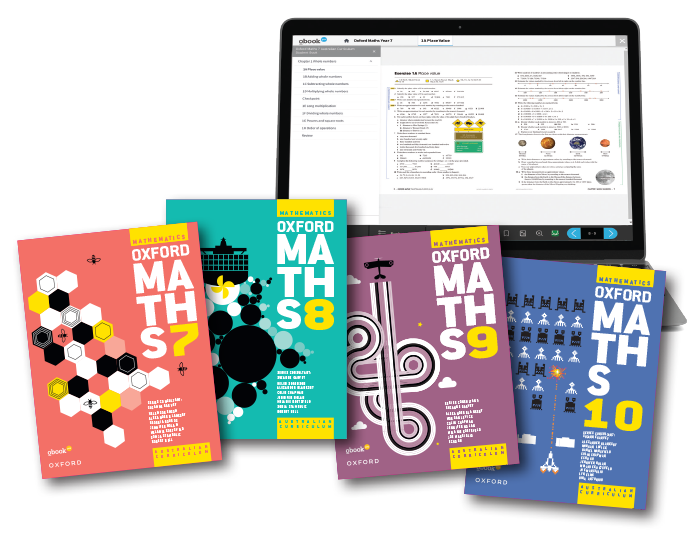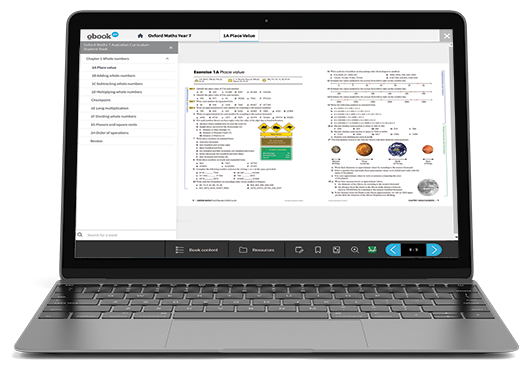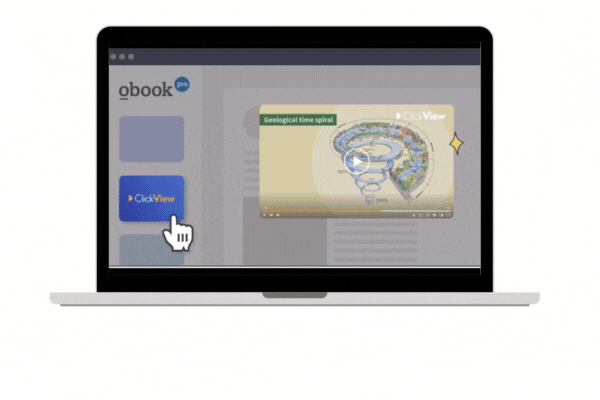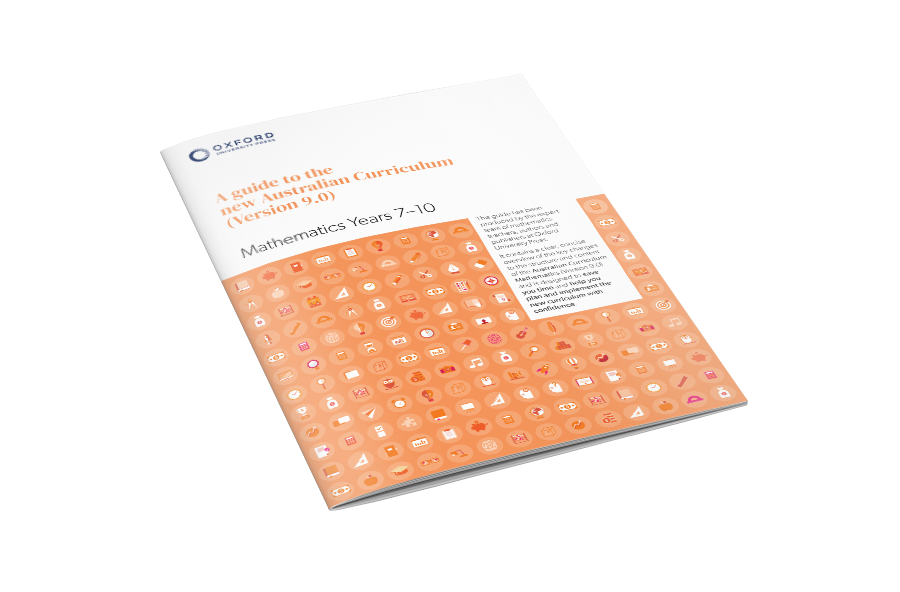Personalised learning made easy with Oxford Maths 7–10
The Australian Curriculum has changed and Oxford is here to support your transition. In mathematics, there is a stronger focus on students mastering the essential mathematical facts, skills, concepts and processes, and being introduced to these at the right time.
Oxford Maths 7–10 is a new teaching and learning resource purpose-written for the Australian Curriculum Mathematics (Version 9.0).
With Oxford Maths 7–10, teachers can deliver differentiated instruction that meets the needs of all students, making mathematics accessible and enjoyable for everyone.


Supporting teachers with obook pro
Premium digital content thoughtfully curated to provide you a roadmap for teaching the new curriculum.
Sample teaching resources now available.
- Year 7 Curriculum Grid
- Year 7 Teaching Program
- Year 7 Scope and Sequence
Oxford Maths 7 Australian Curriculum
Oxford Maths 7
Australian Curriculum
Student Book + obook pro
ISBN: 9780190332822
Student Book + obook pro
Buy now Learn moreStudent Book + obook pro ?Print Student Book with digital obook pro access for 12 months from the date of activation
Oxford Maths 7
Australian Curriculum
Student obook pro
ISBN: 9780190332839
Student obook pro
Buy now Learn moreStudent obook pro ?Digital Student obook pro access for 12 months from the date of activation
Oxford Maths 7
Australian Curriculum
Teacher obook pro
Teacher digital access available to adopting schools
Teacher obook pro ?Free Teacher obooks are only available to schools adopting our series with Student books. Speak to your local education consultant for an annual subscription.
Oxford Maths Australian Curriculum Year 7
Value Pack
ISBN: 9780190345983
Value Pack - Print and Digital
Learn more Value Pack - Print and Digital
?Includes:
Oxford HASS
Oxford MyEnglish
Oxford Science
Oxford Maths
Oxford Maths Australian Curriculum Year 7
Value Pack (Digital)
ISBN: 9780190345990
Value Pack - Digital
Learn more Value Pack - Digital
?Includes:
Oxford HASS
Oxford MyEnglish
Oxford Science
Oxford Maths
Oxford Maths 8 Australian Curriculum
Oxford Maths 8
Australian Curriculum
Student Book + obook pro
ISBN: 9780190332860
Student Book + obook pro
Buy now Learn moreStudent Book + obook pro ?Print Student Book with digital obook pro access for 12 months from the date of activation
Oxford Maths 8
Australian Curriculum
Student obook pro
ISBN: 9780190332877
Student obook pro Buy now Learn more
Student obook pro ?Digital Student obook pro access for 12 months from the date of activation
Oxford Maths 8
Australian Curriculum
Teacher obook pro
Teacher digital access available to adopting schools
Teacher obook pro ?Free Teacher obooks are only available to schools adopting our series with Student books. Speak to your local education consultant for an annual subscription.
Oxford Maths Australian Curriculum Year 8
Value Pack
ISBN: 9780190346010
Value Pack - Print and Digital
Learn more Value Pack - Print and Digital
?Includes:
Oxford HASS
Oxford MyEnglish
Oxford Science
Oxford Maths
Oxford Maths Australian Curriculum Year 8
Value Pack (Digital)
ISBN: 9780190346027
Value Pack - Digital
Learn more Value Pack - Digital
?Includes:
Oxford HASS
Oxford MyEnglish
Oxford Science
Oxford Maths
Oxford Maths 9 Australian Curriculum
Oxford Maths 9
Australian Curriculum
Student Book + obook pro
ISBN: 9780190332907
Student Book + obook pro
Buy now Learn moreStudent Book + obook pro ?Print Student Book with digital obook pro access for 12 months from the date of activation
Oxford Maths 9
Australian Curriculum
Student obook pro
ISBN: 9780190332914
Student obook pro
Buy now Learn moreStudent obook pro ?Digital Student obook pro access for 12 months from the date of activation
Oxford Maths 9
Australian Curriculum
Teacher obook pro
Teacher digital access available to adopting schools
Teacher obook pro ?Free Teacher obooks are only available to schools adopting our series with Student books. Speak to your local education consultant for an annual subscription.
Oxford Maths Australian Curriculum Year 9
Value Pack
ISBN: 9780190346041
Value Pack - Print and Digital
Learn more Value Pack - Print and Digital
?Includes:
Oxford HASS
Oxford MyEnglish
Oxford Science
Oxford Maths
Oxford Maths Australian Curriculum Year 9
Value Pack (Digital)
ISBN: 9780190346058
Value Pack - Digital
Learn more Value Pack - Digital
?Includes:
Oxford HASS
Oxford MyEnglish
Oxford Science
Oxford Maths
Oxford Maths 10 Australian Curriculum
Oxford Maths 10
Australian Curriculum
Student Book + obook pro
ISBN: 9780190332945
Student Book + obook pro
Buy now Learn moreStudent Book + obook pro ?Print Student Book with digital obook pro access for 12 months from the date of activation
Oxford Maths 10
Australian Curriculum
Student obook pro
ISBN: 9780190332952
Student obook pro
Buy now Learn moreStudent obook pro ?Digital Student obook pro access for 12 months from the date of activation
Oxford Maths 10
Australian Curriculum
Teacher obook pro
Teacher digital access available to adopting schools
Teacher obook pro ?Free Teacher obooks areonly available to schools adopting our series with Student books. Speak to your local education consultant for an annual subscription.
Oxford Maths Australian Curriculum Year 10
Value Pack
ISBN: 9780190346072
Value Pack - Print and Digital
Learn more Value Pack - Print and Digital
?Includes:
Oxford HASS
Oxford MyEnglish
Oxford Science
Oxford Maths
Oxford Maths Australian Curriculum Year 10
Value Pack (Digital)
ISBN: 9780190346089
Value Pack - Digital
Learn more Value Pack - Digital
?Includes:
Oxford HASS
Oxford MyEnglish
Oxford Science
Oxford Maths
Bring the curriculum to life with thousands of curriculum-aligned videos
Oxford University Press Australia is delighted to announce a unique partnership with
ClickView
– Australia's leading video solution for schools – to deliver thousands of brand-new, curriculum-aligned videos for secondary schools across Australia.
Find out more

In May 2022, an updated version of Australian Curriculum Mathematics for Years 7–10 (known as Version 9.0) was released by the Australian Curriculum, Assessment and Reporting Authority (ACARA).
From Term 1 2023, schools around Australia will begin to implement the Australian Curriculum Mathematics (Version 9.0), most according to their own state and territory timelines.
Schools in some states and territories will be required to adopt the new curriculum in its entirety, while curriculum bodies in other states and territories will adapt the new curriculum and integrate it into their existing state curricula.
We're here to support you. Register your interest to stay up to date with implementation news in your state or territory and to receive invitations to professional development events and access to sample pages of Oxford’s Australian Curriculum resources.





